The New York Times this morning:
"Michael Butler, Who Brought ‘Hair’ to Broadway, Dies at 95"
See as well . . .
R. Pierson Eaton at a Warren Co. School Board meeting
in the late 1960s — " Quis custodiet ipsos custodes? "
The New York Times this morning:
"Michael Butler, Who Brought ‘Hair’ to Broadway, Dies at 95"
See as well . . .
R. Pierson Eaton at a Warren Co. School Board meeting
in the late 1960s — " Quis custodiet ipsos custodes? "
" La Ribaute is hard to classify. It is now controlled by
a foundation for which Kiefer chose the name 'Eschaton,'
meaning the final event in the divine plan, or the end of
the world. 'You can say it’s the end of the beginning,'
Kiefer said. 'Eschaton means that something comes after.'
So why, I asked, did he pick this name? 'Because it’s the
beginning.' "
I prefer T. S. Eliot on ends and beginnings, as well as
R. A. Wilson on the Eschaton.
See the above title and Barbara Johnson in this journal.
Johnson taught at Harvard for 25 years, starting in 1983.
See also Harvard in the previous post, The Crimson Riddle.
Wednesday's original New York Times headline reporting a Harvard death —
"Henry Rosovsky, Who Redefined
Harvard to Its Core, Dies at 95"
Yesterday that headline was rewritten —
That revision suggests another . . .
An Old Riddle Made New:
"What's black and white and crimson all over?"
And now… the musical!

Update at 12:30 AM ET on Wednesday, November 16, 2022 . . .
Some background:
"Die Philosophie ist ein Kampf gegen die Verhexung
unsres Verstandes durch die Mittel unserer Sprache."
— Wittgenstein, Philosophical Investigations (1953), Section 109
A Chateau Marmont story related to a death that reportedly*
occurred on August 18, 2020 —
https://nypost.com/2020/08/28/
cathy-smith-who-injected-john-belushi-with-fatal-overdose-dies-at-73/
This journal on August 18, 2020 —
* Other sources, such as The New York Times , give August 16 as the
date of death. That date in this journal also deals with art and reality.
For some simple rhymes, see the previous post.
Not so simple: Poetry's Bones.
The previous post discussed the phrase "plot structure."
A different approach —

Textbook art from 1974 —

See as well a more interesting book I enjoyed reading in 1974.
From Peter J. Cameron's weblog today —
"It happens sometimes that researchers working in different fields
study the same thing, give it different names, and don’t realise that
there is further work on the subject somewhere else…."
Cameron's example of a theorem connecting work on
the same thing in different fields —
"Theorem A partition Δ is equitable for a graph Γ if and only if
the projection matrix onto the subspace of functions constant
on parts of Δ commutes with the adjacency matrix of Γ."
A phrase from Cameron's remarks today —
"Thus we have to consider 'plot structure'…."
For more remarks on different fields and plot structure , see
"Quantum Tesseract Theorem" in this weblog.
See posts now tagged A Song Is Born.
(The song is not Oh, Susannah. See related remarks.)
See also other Log24 posts tagged Dirac and Geometry.
For the late Brian O'Doherty, from posts now tagged "Pless Birthday 2022" —
This post was suggested by an obituary of O'Doherty and by
"The Life and Work of Vera Stepen Pless" in
Notices of the American Mathematical Society , December 2022.
See "Internet Abyss" in this journal.
See Hell to Heaven (Log24, December 14, 2003).
In memory of Gallagher and of Jeff Cook —
“Excuse me, Miss, I didn’t order this,” Shatner says.
“It looks like something from the abyss."

The above menu was suggested by Tamer Nawar,
a philosophy professor mentioned here on Sept. 22.
From a search in this journal for "Hexagram 61" —
“‘Oracle, why did you write
The Grasshopper Lies Heavy?
What are we supposed to learn?'”
— Philip K. Dick
“She began throwing the coins.“
Click to enlarge.



The above 1975 book by Robert Greer Cohn, Modes of Art, is
Volume I of a planned three-volume work.
The passage below is from a review of Cohn's Vol. II, Ways of Art —
|
Franklin, Ursula (1987) "Book Review: A Critical Work II. . . . . Those not familiar with the author's epistemology should begin with Appendix A of Ways of Art , a schematic demonstration of his tetrapolar-polypolar-dialectic, especially as it concerns the development of the French novel within the European tradition. But this dialectic, which has antecedents in Kierkegaard, Mallarme and Joyce, underlies all art, because: "this dimensional pulsation, or tetrapolar (and polypolar) higher vibrancy is, in short, the stuff of life: life is vibrant in this more complex way as well as in the more bipolar sense" (7). Cohn shows that "far out enough" the male or linear and the female or circular, the male vertical and the female horizontal dimensions "tend to merge as in relativity theory" (19). Ways of Art shows us the way through a historical becoming of art in its complex dialectic in which the metonymic (horizontal) axis constantly interrelates with the metaphoric (vertical). "Life is the mother, art the father" (vii); hence Cohn's quarrel with most contemporary Feminism, which is pronounced throughout the volume. Firmly grounded in its author's tetra-polypolar epistemology, this beautiful book becomes, however, at no point dryly abstract; it is the mature work of a true humanist who stands in clear and open opposition to the dehumanizing trend of "the quasi-scientific reductionism and abstract gimmickry of a great deal of current academic literary study, bellwethered by the structuralists, post-structuralists, and deconstructionists" (vi). Abundant footnotes constitute a substantial part of Ways of Art , on occasion developing insights almost into essays demonstrating crucial points along the general flow of the tradition from "Obscure Beginnings;' the opening chapter, to our "Contemporaries;' the last. Cohn reminds us that "In the Beginning was the Word;' for the Judaeo-Christian tradition at least, which his study fervently embraces; thus, for example, in Appendix 0 on "The Dance of the Sexes;' he censures "those who live by slogans, camps, and peer-opinion, the countless little bastard cults which characterize an era which has massively veered away from our free and beautiful Greco-Judaeo-Christian tradition" (332). Cohn traces man's way and that of his myths and rituals culminating in his art from that beginning along the lines of Freud, Neumann and Cassirer, and many others, always demonstrating the underlying polypolar dialectical rhythm. Thus in "From Barbarism to Young Culture;' we follow the Celts to Druidic ritual, Hebrew beginnings to the Psalms, Dionysian ritual to Greek tragedy, and thence to the beginnings of French dramatic literature originating in the Quem quaeritis sequence of the medieval Mass. Along the way arises artistic symbolism, for Cohn synonymous with "effective poetry;' to finally "ripen in France as never before" (99). Table I (134) graphs this development from the twelfth to the late nineteenth and early twentieth centuries. The author traces the rise of the artistic vocation from its antecedents in the double function of bard and priest, with the figure of Ronsard at the crossroads of that dying institution and the nascent concept of personal glory. "The Enlightenment Vocation" is exemplified in Montaigne, who humanizes the French cultural elite and points the way to French classicism and, farther down the road, after the moral collapse with the outgoing reign of Louis XIV, toward the Age of Reason. Clearly the most significant figure of the French Enlightenment for all of Western civilization is Rousseau, and Cohn beautifully shows us why this is so. Subsequently, "the nineteenth-century stage of the writer's journey will lead, starting from the crossroads of Rousseau, primarily in these two directions: the imperialistic and visionary prose of Balzac, the equally ambitious poetry of Mallarme", brothers under the skin" (199). And these two paths will then be reconciled in Proust's monumental A la recherche du temps perdu . . . . . |
"Apart from its great antiquity the picture-story mode of presentation
favored by the unconscious has the appeal of its simple utility.
A picture can be recalled in its entirety whereas an essay cannot."
— Cormac McCarthy, essay on language and the unconscious,
April 17, 2017

A more cheerful moment, from June 19, 2019:
Crystal Ocean wins the Prince of Wales trophy —

Related entertainment from this journal on June 19, 2019 —
"Our die was cast."
From The Queen's Gambit by Walter Tevis —

|
The Saturday afternoon movie in the library was The Robe . It had Victor Mature in it and was spiritual; all the staff was there, sitting attentive in a special row of chairs at the back, near the shuddering projector. Beth kept her eyes nearly shut during the first half-hour; they were red and sore. She had not slept at all on Thursday night and had dozed off for only an hour or so Friday. Her stomach was knotted, and there was the vinegar taste in her throat. She slouched in her folding chair with her hand in her skirt pocket, feeling the screwdriver she had put there in the morning. Walking into the boys’ woodworking shop after breakfast, she took it from a bench. No one saw her do it. Now she squeezed it in her hand until her fingers hurt, took a deep breath, stood up and edged her way to the door. Mr. Fergussen was sitting there, proctoring. “Bathroom,” Beth whispered. Mr. Fergussen nodded, his eyes on Victor Mature, bare-chested in the arena. She walked purposively down the narrow hallway, over the wavy places in the faded linoleum, past the girls’ room and down to the Multi-Purpose Room, with its Christian Endeavour magazines and Reader’s Digest Condensed Books and, against the far wall, the padlocked window that said PHARMACY. |
A related Log24 post —
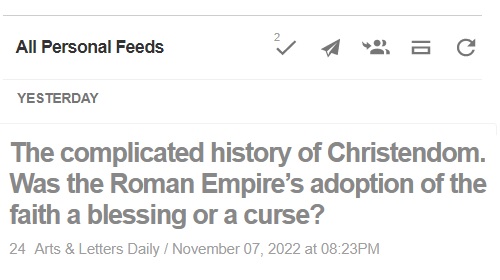
"Discuss." — Coffee Talk
Or: MDT-48 Meets COMP360.
‘It doesn’t have a street-name and that’s because, as yet,
it doesn’t have any street profile – which is incidentally
the way we want it to stay. The boys in the kitchen are
keeping it low-key and anonymous. They’re calling it MDT-48.’
The boys in the kitchen?
— Glynn, Alan. Limitless: A Novel (p. 40).
Picador. Kindle Edition.
(Originally published by Little, Brown
in Great Britain in 2001 as The Dark Fields .)
From Log24 on Nov. 29, 2020 —
CNN story from All Souls' Day 2022 —
“This drug can be extracted from magic mushrooms,
but that is not the way our compound is generated.
It’s synthesized in a purely chemical process
to produce a crystalline form,” said Goodwin, who is
the chief medical officer of COMPASS Pathways,
the company that manufactures COMP360 and
conducted the study."
See as well "To Think That It Happened on Prescott Street"
and related posts.
"… the 1964-65 competition was not even held."
— Dylan Loeb McClain in The New York Times , Nov. 3, 2020.
But in other games . . .
"The metaphor for metamorphosis no keys unlock."
— Steven H. Cullinane, November Seventh, 1986
Bridge


Dam
April 11, 2020, was the dies natalis ,
in the Catholic sense,
of John Horton Conway.
Whatever.
See as well this journal on July 17, 2019 —
Posts now tagged Life-Death-Geometry.
Heard Thursday evening in the dark fields of the republic —
"Rebel rebel, you've torn your dress
Rebel rebel, your face is a mess
Rebel rebel, how could they know?
Hot tramp, I love you so!"

Addendum — 10:30 AM ET on 5 Nov. 2022 —

Addendum — 5:45 PM ET on 4 Nov. 2022 —
The Triangle Club of Sadness
"If you can't dazzle 'em with brilliance,
baffle 'em with bullshit." — Folk saying
Brilliance —
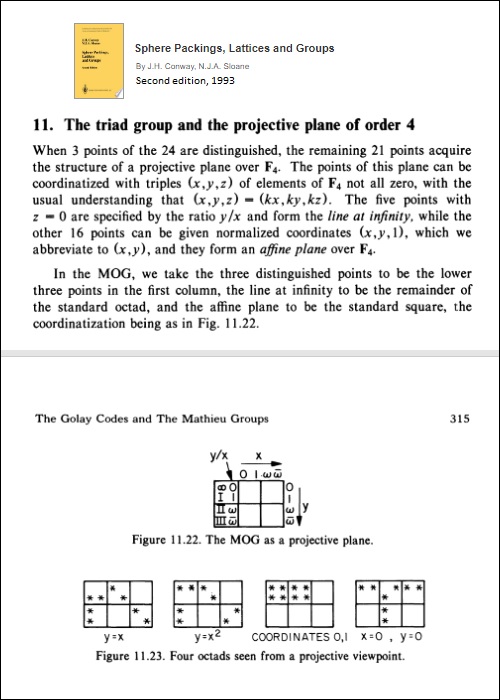
Bullshit —
A New York Times book review on All Saints' Day 2002 —
"Like every villain, Sill has an origin story. This one involves
the murder of his father and the assassination of Martin Luther King Jr.
As vengeance, Sill resolves to destroy America using a weapon
called a 'complex projective plane orbiter.' What does that mean?
Don’t worry about it."

Related reading: The Aloha Grid .
"Rotate, Flip, and Stretch, Baby!"
"One way to evaluate an artist is to observe the quantity and quality
of misinterpretation his work begets. By this measure Everett ranks
very highly. 'Damn it, I don’t understand it, but I love it,' mutters one
of the characters, regarding Sill’s weapon of nothingness. Same.
Kitu has a colleague named Eigen Vector, which refers to …
something having to do with linear transformations?"
— Book review by Molly Young in The New York Times
on All Hallows' Day 2022
See as well Bik in The New Yorker on June 23, 2021.
"In a typical Booth cartoon, a lot happens at once."
Cartoonish news from yesterday . . .

New Yorker cartoon caption, not by Booth —
"What part of Noh don't you understand?"
Scholium —
The H — and …

(Title suggested by Google News today
and by a Percival Everett short story.}
"Principal photography has begun in Croatia
on the action thriller Canary Black , starring Kate Beckinsale
and Rupert Friend (Anatomy of a Scandal )."
"The film’s plot follows a top CIA operative, Avery Graves
(Beckinsale)…. Cut off from her team, she turns to her
underworld contacts to survive and help locate the
coveted intelligence that the kidnappers want."
[Croatia , underworld , and coveted intelligence links added.}

From other Log24 posts tagged "The Phantom Date" —
“… her mouth is red and large, with Disney overtones. But it is her eyes,
a pale green of surprising intensity, that hold me.”
— Violet Henderson in Vogue , 30 August 2017
The above title is that of a Log24 post on St. Cecilia's Day in 2017
that quoted some earlier All Souls' Day remarks from Berlin.
From that post —

Exercise: Explain why the lead article in the November issue of
Notices of the American Mathematical Society misquotes Weyl
and gives the misleading impression that the example above,
the eightfold cube , might be part of the mathematical pursuit
known as geometric group theory .

Background: Earlier instances here of the phrase "geometric group theory."
The New York Times today reported a death on October 18th,
the Feast of St. Luke.

See also Luke in this journal. Some will prefer Cool Hand Luke to
the alleged gospel author.
From Log24 posts tagged Boole vs. Galois —
Kauffman‘s fixation on the work of Spencer-Brown is perhaps in part
due to Kauffman’s familiarity with Boolean algebra and his ignorance of
Galois geometry. See other posts now tagged Boole vs. Galois.
See also “A Four-Color Epic” (April 16, 2020).
See also "hell of a band" in this journal.
From an Oct. 26 elegy in the form of a book review …
From a search in this journal for "deploy" —

Related art —
As for "Miracles and Visionaries," I prefer the literature associated
with the 1974 Miracle Octad Generator of R. T. Curtis.
A reference to neoliberalism in today's news suggests a look at
a British journalist's remarks from April 2016 . . .
"Like communism, neoliberalism is
the God that failed. But the zombie doctrine
staggers on . . . ."
Big Rock
"I'm going to hit this problem
with a big rock."
– Mathematical saying, quoted here
on St. Peter's Day 2008

"I see a red door and I want it painted black" — The Rolling Stones
"… Évariste was born on October 25, 1811."
— Eric Temple Bell, Men of Mathematics
Related material —
But seriously . . .
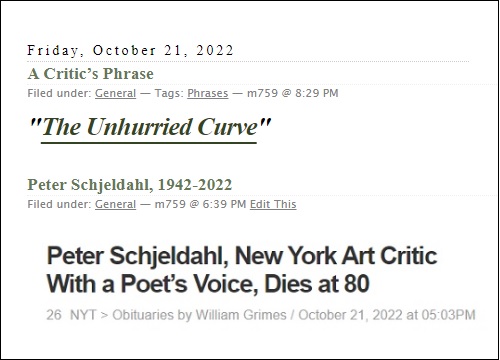
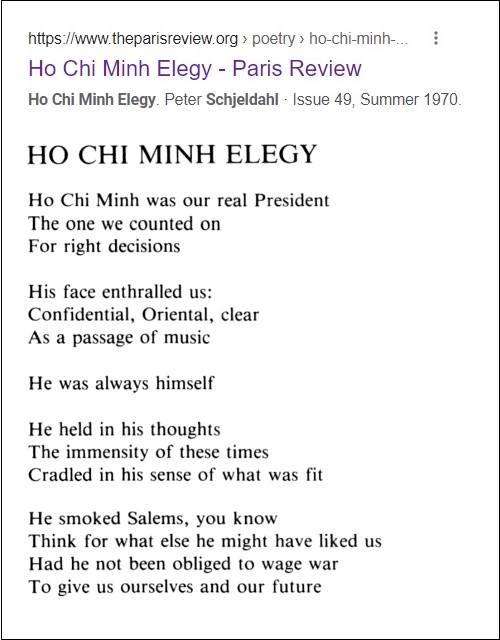
For Pekonen in this journal, see
From the Finland Station (25 April 2022).
See as well an obituary from Finland.

Also on October 3rd . . . The Concrete of Destiny .
Continuing the "Design Awards" series of posts . . .
See as well, from a search in this journal for Caprica . . .
The above image of an 18 Sept. post commemorates a Sept. 18 death.
Related material: Kiss of the Spider Woman and Dramarama.
See as well remarks here from 23 Dec. 2014
on the Greek word "stoicheia."
The author of the above Math Academy story is one Jay Mathews:
As a model for accelerated learning, I prefer Kate Demianova.
"Boron atoms and metal atoms can form a configuration . . . ."
See as well other posts now tagged Death Valley Days.

See as well "Sunset Boulevard" in this journal.
Fake News headline from the previous post —
"Treasure Seeker Trapped in Burial Vault"
Illustration —

A link in memory of a Princeton-educated mathematics professor who
reportedly died on June 22, 2022 . . . Some non-Princeton triangles.
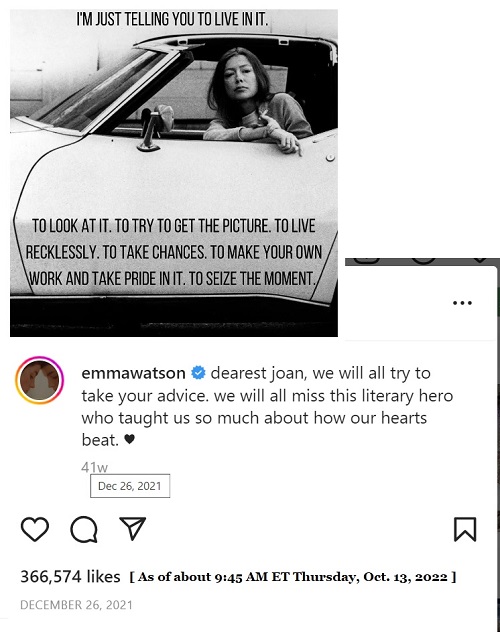
A routine check for the accuracy of Watson's quotation yields the source
of Didion's remarks — a 1975 UC Riverside commencement address.
A search for background on the previous post's Eliot Weinberger yields,
from Berlin . . .
"In 2000 he was the first US writer to be honoured with
the Order of the Aztec Eagle from the Mexican government."
— "2000 zeichnete ihn die mexikanische Regierung als ersten
US-amerikanischen Autor mit dem Order of the Aztec Eagle aus."
The Aztec Eagle with a serpent in its beak, landing on a prickly pear,
is pictured on the flag of Mexico.
See also Weinberger's work at Prickly Paradigm Press.
Related material: Other Log24 posts tagged Prickly.

See also a Log24 search for "The Path."
Related material from a similar search
for "Nanavira Thera" —
"I am glad you have discovered that the situation is comical:
ever since studying Kummer I have been, with some difficulty,
refraining from making that remark."
— Nanavira Thera, Seeking the Path [Early Letters, 17 July 1958].
The following note from Oct. 10, 1985, was not included
in my finitegeometry.org/sc pages.
See some related group actions on the cuboctahedron at right above.
"For Marker, memory isn’t passive; it’s an act of resistance—
the edge that cuts a path into the future—and the effective work
of memory is the very definition of art."
— July 30, 2012 in The New Yorker… Richard Brody on the late
film editor Chris Marker.
("Raiders of the Lost Spell" continues.)
The above flashback to a 2002 post was suggested by a search in
this journal for "Firebird" that yielded, as the only result . . .
http://www.amazon.com/
Witch-Seldom-Firebird-Nancy-Springer/dp/0142302201/.
That URL connects to The Hex Witch of Seldom at Amazon.com.
That book was reportedly published by Firebird on September 16, 2002,
the date of the above Log24 post.
Powered by WordPress